- Home
- Solar Panel
Function of Solar Panel:
1. Conversion of Sunlight to Electricity
2.Powering Electrical Loads
3. Energy Storage (Optional)
4. Reducing Carbon Footprint
5. Specialized Applications
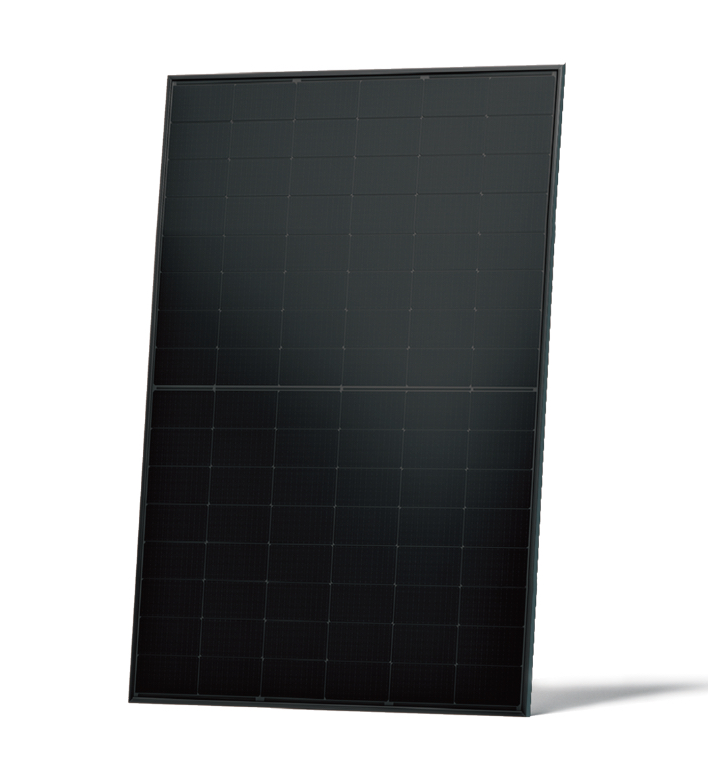
450-475W N-TYPE All BLACK MONO-FACIAL MODULE WITH DUAL GLASS
Solar Cells Type: N- type Mono-crystalline
No. of cells: 96(48x2)PCS
Size: 1762x1134x30mmmm
Weight: 24 kg.
Packing Detail
: 37 pcs/pallets, 962 pcs/ 40'HQ
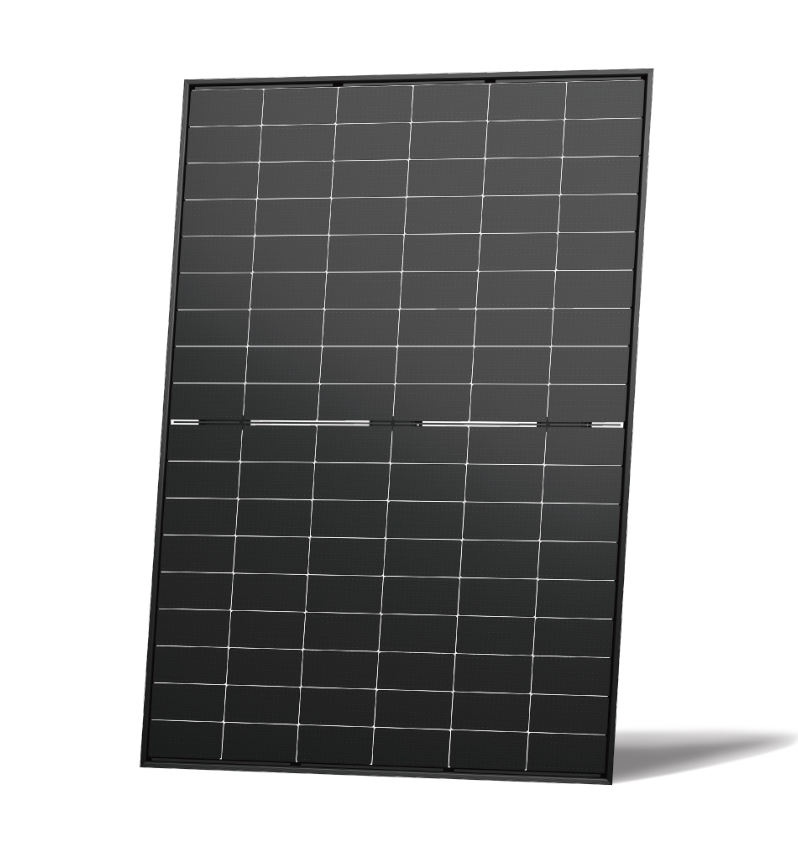
425-455W N-TYPE 54 HALF CELL WHITE/BLACK BIFACIAL WITH DUAL GLASS
Solar Cells Type: N- type Mono-crystalline
No. of cells: 108(54x2)PCS
Size: 1722x1134x30mmmm
Weight: 24.5 kg.
Packing Detail
: 37 pcs/pallets, 962 pcs/ 40'HQ
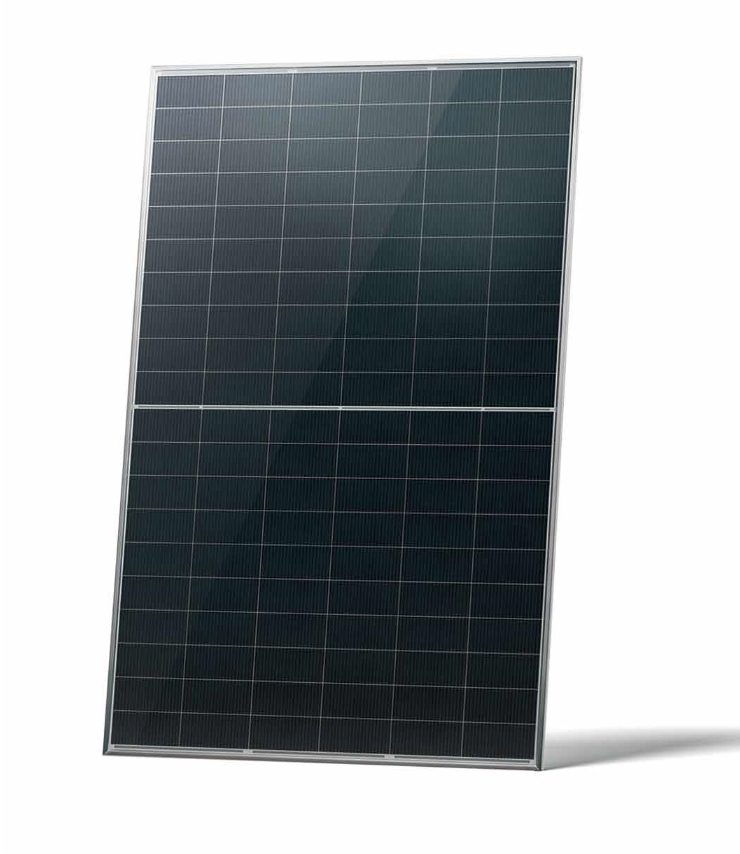
490-510W N-TYPE 60 HALF CELL MONO FACIAL MODULE WHITE BACK SHEET
Solar Cells Type: N- type Mono-crystalline
No. of cells: 120(60x2)PCS
Size: 1960x1134x30mmmm
Weight: 22.5 kg.
Packing Detail
: 37 pcs/pallets, 888 pcs/ 40'HQ
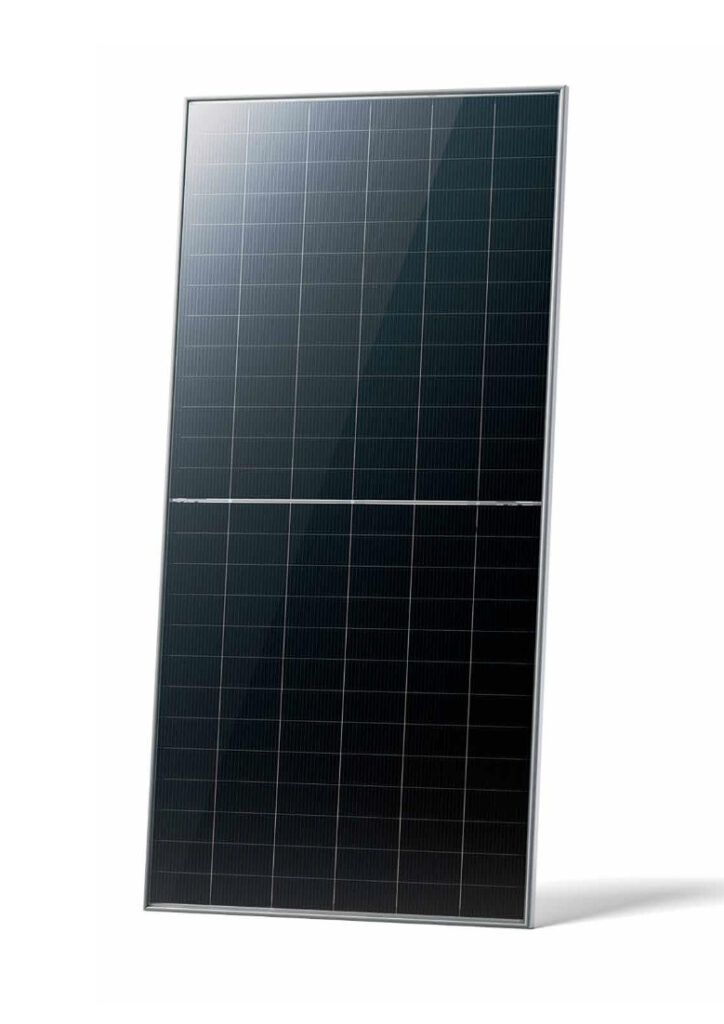
625-650W N TYPE BIFACIAL MODULE WITH DUAL GLASS
Solar Cells Type: N- type Mono-crystalline
No. of cells: 132(66x2)PCS
Size: 2382x1134x30mmmm
Weight: 32.4 kg.
Packing Detail
: 36 pcs/pallets, 720pcs/ 40'HQ
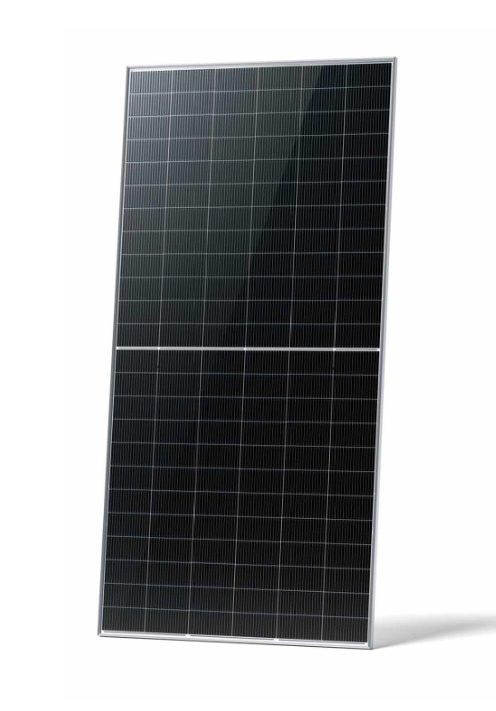
575-600W N TYPE BIFACIAL MODULE WITH DUAL GLASS
Solar Cells Type: N- type Mono-crystalline
No. of cells: 144(72x2)PCS
Size: 2278x1134x30mmmm
Weight: 31 kg.
Packing Detail
: 36 pcs/pallets, 720pcs/ 40'HQ
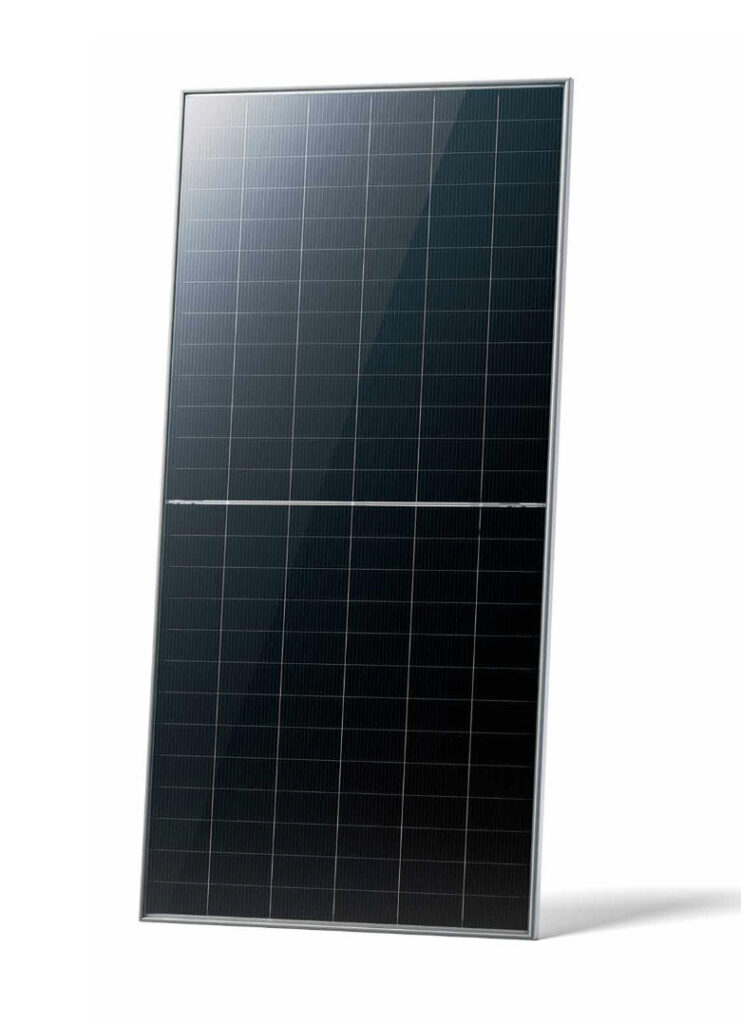
625-650W N TYPE BIFACIAL MODULE WITH DUAL GLASS
Solar Cells Type: N- type Mono-crystalline
No. of cells: 154(78x2)PCS
Size: 2465x1134x30mmmm
Weight: 34 kg.
Packing Detail
: 36 pcs/pallets, 576pcs/ 40'HQ
REQUEST A QUOTE FOR MORE DETAILS
All You Need To Know About Solar Panel!
1. What Are Solar Panels?
2. Types of Solar Panels
1. Monocrystalline Panels
– Made from a single crystal of silicon.– High efficiency (20–22%).
– Long lifespan and excellent performance in low light.
2. Polycrystalline Panels
– Made from multiple silicon crystals.– Moderate efficiency (15–17%).
– More affordable but slightly less efficient than monocrystalline.
3. Thin-Film Panels
– Made by depositing thin layers of PV materials (like cadmium telluride or amorphous silicon).– Flexible and lightweight but lower efficiency (10–12%).
4. Bifacial Panels
– Generate electricity on both sides of the panel.– Ideal for maximizing energy output in reflective environments.
3. How Solar Panels Work?
- Absorption of Sunlight: Solar cells absorb sunlight, exciting electrons in the silicon layers.
- Electric Current Creation: The movement of these electrons generates an electric current.
- Conversion to Usable Power: The electricity generated is DC, which is converted to alternating current (AC) using an inverter, suitable for household or commercial use.
4. Efficiency Factors
- Sunlight Intensity: Direct sunlight increases efficiency.
- Panel Orientation and Tilt: Facing true south (in the Northern Hemisphere) or true north (in the Southern Hemisphere) at the correct tilt angle maximizes energy capture.
- Temperature: High temperatures can decrease efficiency.
- Shading: Partial shading can significantly reduce output.
5. Applications
- Residential Rooftops: Powering homes, reducing electricity bills.
- Commercial Installations: Large-scale systems for factories, offices, and warehouses.
- Utility-Scale Solar Farms: Large fields of solar panels feeding electricity into the grid.
- Off-Grid Systems: Powering remote areas, RVs, boats, and emergency backups.
6. Key Components of a Solar System
- Solar Panels: Capture sunlight.
- Inverter: Converts DC to AC.
- Battery Storage (Optional): Stores excess energy for later use.
- Mounting Systems: Secure the panels to roofs or ground.
- Monitoring System: Tracks energy production and system health.
7. Benefits of Solar Panels
- Environmental: Reduces greenhouse gas emissions and dependence on fossil fuels.
- Economic: Lowers electricity bills and qualifies for tax incentives and rebates.
- Renewable Energy Source: Infinite and sustainable energy from the sun.
- Low Maintenance: Require minimal upkeep with periodic cleaning and inspections.
8. Challenges
- Initial Cost: High upfront costs for installation.
- Weather Dependency: Reduced efficiency during cloudy or rainy days.
- Space Requirements: Large installations need significant space.
- Recycling and Disposal: Managing end-of-life solar panels is a growing concern.
9. Innovations in Solar Technology
- Perovskite Solar Cells: Potential for cheaper and more efficient solar panels.
- Solar Shingles:Integrated roofing materials with built-in solar cells.
- Floating Solar Farms: Panels installed on water bodies to save space.
- Transparent Solar Panels: For windows and building facades.
10. Maintenance Tips
- Clean Panels Regularly: Remove dust, leaves, and debris.
- Check for Damage: Inspect for cracks or wear.
- Monitor Performance: Use monitoring apps to track efficiency.
- Professional Servicing: Annual inspections by professionals ensure optimal operation.